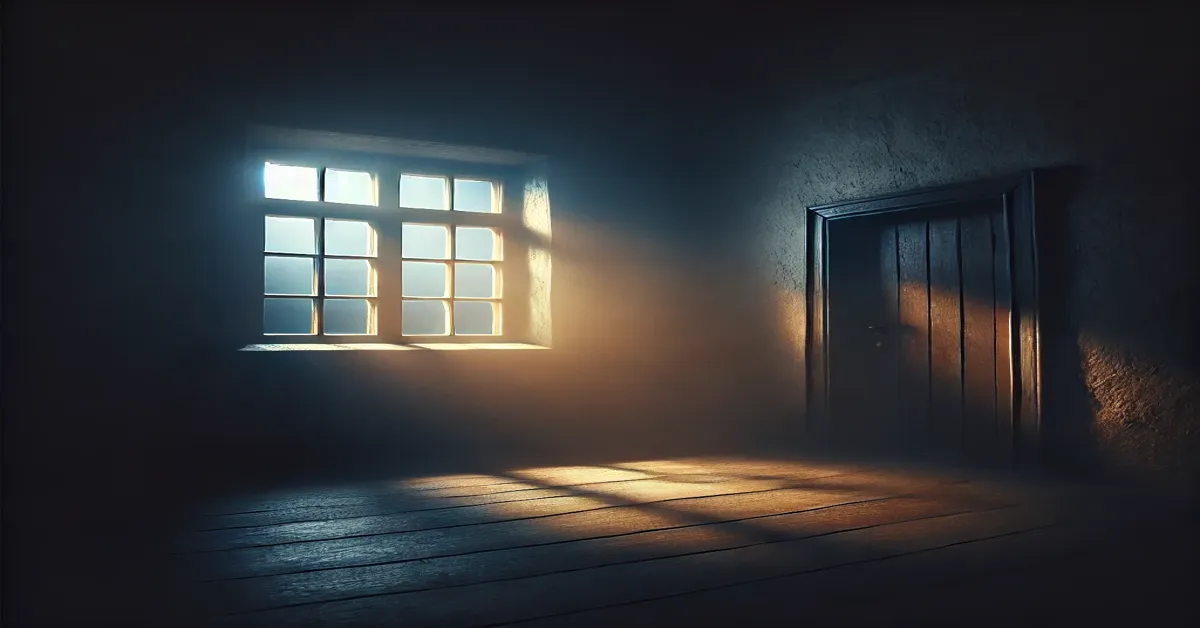“One Dark Window” is a phrase that evokes a multitude of interpretations, ranging from its use in literature and poetry to its application in art and popular culture. The dark window is often symbolic of mystery, introspection, and a glimpse into the unknown. Whether we are talking about a literal window or using it as a metaphor, the image of a single dark window can encapsulate powerful themes, emotions, and narratives.
In this article, we will delve deeply into the symbolic meaning of “one dark window’s,” its use in literature, film, and other art forms, and the various interpretations it has inspired throughout history. We will also explore how this concept resonates with contemporary audiences and its ongoing relevance. By the end of the article, we will have constructed a comprehensive understanding of this evocative phrase, demonstrating its thematic richness and the emotional depth it can convey.
1. The Symbolism of Windows in Art and Literature
Windows are often seen as symbols in both visual and literary art. They represent a boundary between two worlds—the interior and the exterior, the conscious and the unconscious, or even the known and the unknown. A dark window, in particular, intensifies this symbolism, adding layers of mystery and foreboding. The darkness implies an absence of clarity, vision, or understanding, making it an ideal metaphor for themes such as ignorance, fear, and the unknown.
1.1 Windows as Boundaries
In literature, windows often symbolize boundaries that characters must cross to understand themselves or their situations more fully. Whether a window separates a person from the outside world or provides them a view of something they fear, it serves as a pivotal element in many narratives.
- Example: In Charlotte Perkins Gilman’s “The Yellow Wallpaper,” windows are a source of both relief and entrapment for the protagonist, who gazes through them while being confined to her room. The dark window can be interpreted as a representation of her mental state, which grows increasingly clouded as the story progresses.
1.2 Darkness as a Metaphor for Fear and the Unknown
The darkness in “one dark window’s” amplifies the sense of mystery, often symbolizing ignorance, the unconscious mind, or fear of what is not visible or known. In many stories, a dark window serves as a focal point for the narrative tension, hinting at what might be lurking beyond but refusing to reveal it. This lack of visibility stirs curiosity, anxiety, and often dread in both characters and readers alike.
- Example: In Edgar Allan Poe’s “The Tell-Tale Heart,” darkness and windows serve as motifs for the protagonist’s descent into madness, as he becomes obsessed with the invisible dangers he imagines within the darkened spaces of his mind and home.
2. The Role of One Dark Window in Literature
One dark window has often been used in literary works to represent themes of isolation, introspection, and fear of the unknown. In these contexts, the singular “one” reinforces the idea of solitude and singular focus, while the “dark window” highlights the barrier between knowledge and ignorance, or between life and death.
2.1 Gothic Literature
In Gothic literature, windows, particularly dark ones, are key visual elements that often contribute to the eerie and suspenseful atmosphere. A lone dark window’s is frequently used to indicate something hidden—whether it is a secret, a hidden fear, or something more supernatural.
- Example: In classic Gothic novels like “Wuthering Heights” by Emily Brontë, dark windows serve as gateways to the tumultuous emotions of the characters and are often the setting for ghostly apparitions or dramatic encounters. The dark window may symbolize the barriers between the living and the dead or the internal emotional turmoil of the characters.
2.2 Modern Fiction
In contemporary fiction, the motif of a dark window continues to resonate. It often signifies emotional distance, a character’s isolation, or a barrier to self-awareness. Authors use the imagery of one dark window’s to draw readers into the psychological complexities of their characters, using it as a lens through which deeper human truths can be examined.
- Example: In novels that explore themes of mental illness or emotional isolation, the image of one dark window might reflect the character’s disconnection from the world around them, emphasizing the internal darkness they cannot escape.
2.3 Poetry
Poetry has long embraced the symbolism of windows, particularly darkened ones. Poets often use a single dark window to symbolize moments of reflection or existential dread, focusing on the internal rather than the external.
- Example: In Emily Dickinson’s poetry, windows often serve as metaphors for the divide between life and death, as well as the transition from one state of being to another. The darkness of the window symbolizes the unknown aspects of death or eternity.
3. The Role of One Dark Window in Film and Visual Arts
Film and visual arts, like literature, utilize the symbol of one dark window’s to convey emotional depth, isolation, and suspense. The visual nature of film, in particular, allows directors to play with light and darkness to manipulate audience perceptions and evoke emotions.
3.1 Cinematic Uses of Dark Windows
In cinema, a dark window often serves as a powerful visual tool to create suspense or foreshadow danger. Directors frequently use it to convey a sense of something unseen but imminent. The lone dark window may be the focus of a shot, suggesting a lurking threat or the unknown, which increases the tension for the viewer.
- Example: Alfred Hitchcock often used windows in his films to create suspense. In “Rear Window,” for example, the protagonist becomes obsessed with what might be happening behind the closed windows he observes from his own apartment, with darkness symbolizing the unknown activities that could spell danger.
3.2 Visual Art
In visual art, the imagery of a dark window can be both literal and abstract. It might represent a scene of solitude or a more conceptual representation of emotional or existential states. Artists often use the motif to explore the themes of isolation, introspection, or the divide between the known and the unknown.
- Example: Edward Hopper’s painting “Nighthawks” uses windows to frame individuals in solitude, with darkness both inside and outside the windows hinting at their emotional isolation. While the scene doesn’t depict a literal dark window, the absence of light in the setting serves as a metaphor for the emotional disconnect between the figures inside.
4. Psychological Interpretations of One Dark Window
From a psychological perspective, the motif of one dark window’s can serve as a metaphor for various aspects of the human mind. It often symbolizes emotional isolation, cognitive barriers, or the fear of the unknown, all of which are central to human psychology.
4.1 The Dark Window as a Representation of the Subconscious
In psychological terms, the dark window can be interpreted as a representation of the subconscious mind. The things that remain hidden from view, just beyond the dark window’s, symbolize the thoughts, memories, or fears that a person is not fully aware of or does not wish to confront.
- Example: In psychological thrillers, the motif of a dark window’s might be used to represent the protagonist’s struggle with hidden trauma or repressed memories. The inability to see clearly through the window reflects their difficulty in accessing or understanding these buried parts of their psyche.
4.2 Emotional Isolation and Barriers
The idea of “one dark window’s” can also symbolize emotional barriers. Just as a dark window’s prevents someone from seeing out, emotional barriers prevent individuals from connecting with others or understanding their own emotions fully. This theme is prevalent in stories of loneliness, depression, or emotional trauma.
- Example: In films or novels that explore the theme of emotional isolation, the protagonist might spend time looking through a darkened window, contemplating their separation from the world around them.
5. Contemporary Relevance of One Dark Window
While the symbolism of one dark window’s has its roots in classical literature, art, and psychology, it remains highly relevant today. In an increasingly complex and sometimes isolating world, the metaphor of a dark window resonates with many individuals who feel disconnected or are grappling with the uncertainties of modern life.
5.1 Modern Life and Isolation
The fast pace of modern life, coupled with the prevalence of digital communication, can often leave people feeling disconnected from one another. The metaphor of one dark window’s becomes a poignant reflection of this isolation, symbolizing the barriers that modern individuals face in forging genuine connections or understanding their place in the world.
5.2 The Digital Age and the Unknown
In the digital age, where information is abundant but not always clear, the concept of a dark window can represent the challenges of navigating the unknown. Whether it’s in terms of privacy concerns, online identities, or the ever-changing landscape of technology, the dark window’s stands in for the opaque boundaries that prevent people from fully understanding the digital world.
5.3 The Pandemic and Solitude
The global COVID-19 pandemic has brought the theme of isolation to the forefront. Many people found themselves physically separated from loved ones, and the dark window can serve as a symbol of that isolation and the emotional toll it has taken. Looking out from one dark window, individuals may feel the distance between themselves and the outside world more acutely.
6. The Future of One Dark Window as a Metaphor
As we move into the future, the symbolism of one dark’s window is likely to remain relevant, continuing to evolve with the times. In the realms of literature, art, and psychology, it will persist as a potent metaphor for the human experience.
6.1 Continuing Artistic Interpretations
Artists and authors will likely continue to use the dark window’s as a symbol of mystery, isolation, and introspection, adapting it to new cultural contexts. As we grapple with modern issues such as climate change, political instability,
and technological advancements, the dark window may come to represent these larger unknowns as well.
6.2 Psychological Exploration
Psychologically, the metaphor of the dark window will remain a relevant tool for exploring the human mind. As mental health awareness increases, the dark window could continue to symbolize the emotional and cognitive barriers that individuals face in understanding themselves and connecting with others.
Conclusion
The phrase “one dark window’s” carries deep, multifaceted meaning across various forms of art, literature, and psychology. Whether it represents the unknown, emotional isolation, or the subconscious mind, the dark window is a powerful metaphor that evokes complex emotions and thoughts. From Gothic literature to modern films, it continues to captivate audiences by offering a glimpse into both the darkness outside and the darkness within. Its relevance in today’s world—especially in the context of isolation, emotional barriers, and the digital age—suggests that the dark window will continue to resonate in the years to come.
FAQs
1. What does “one dark window” symbolize in literature?
In literature, “one dark window” often symbolizes mystery, isolation, fear, or the unknown. It can represent a barrier between the conscious and the subconscious or between the individual and the outside world.
2. How is the image of a dark window used in art?
In visual art, a dark window can symbolize solitude, introspection, or emotional isolation. It is often used to frame individuals in lonely or contemplative moments.
3. What psychological meaning does a dark window carry?
Psychologically, a dark window may represent emotional barriers, the subconscious mind, or hidden fears. It often symbolizes what remains unseen or unprocessed in an individual’s mind.
4. How is “one dark window” relevant in modern life?
In modern life, “one dark window” can symbolize feelings of disconnection, emotional isolation, or the challenges of navigating the unknown, particularly in the digital age.
5. How has the motif of one dark window been used in film?
In film, a dark window often creates suspense or foreshadows danger. Directors use it to heighten the sense of mystery or impending events, playing on the audience’s fear of the unknown.
6. Why does the metaphor of one dark window remain relevant today?
The metaphor remains relevant today because it speaks to universal themes of isolation, introspection, and fear of the unknown, all of which are increasingly relevant in a rapidly changing, often isolating world.











